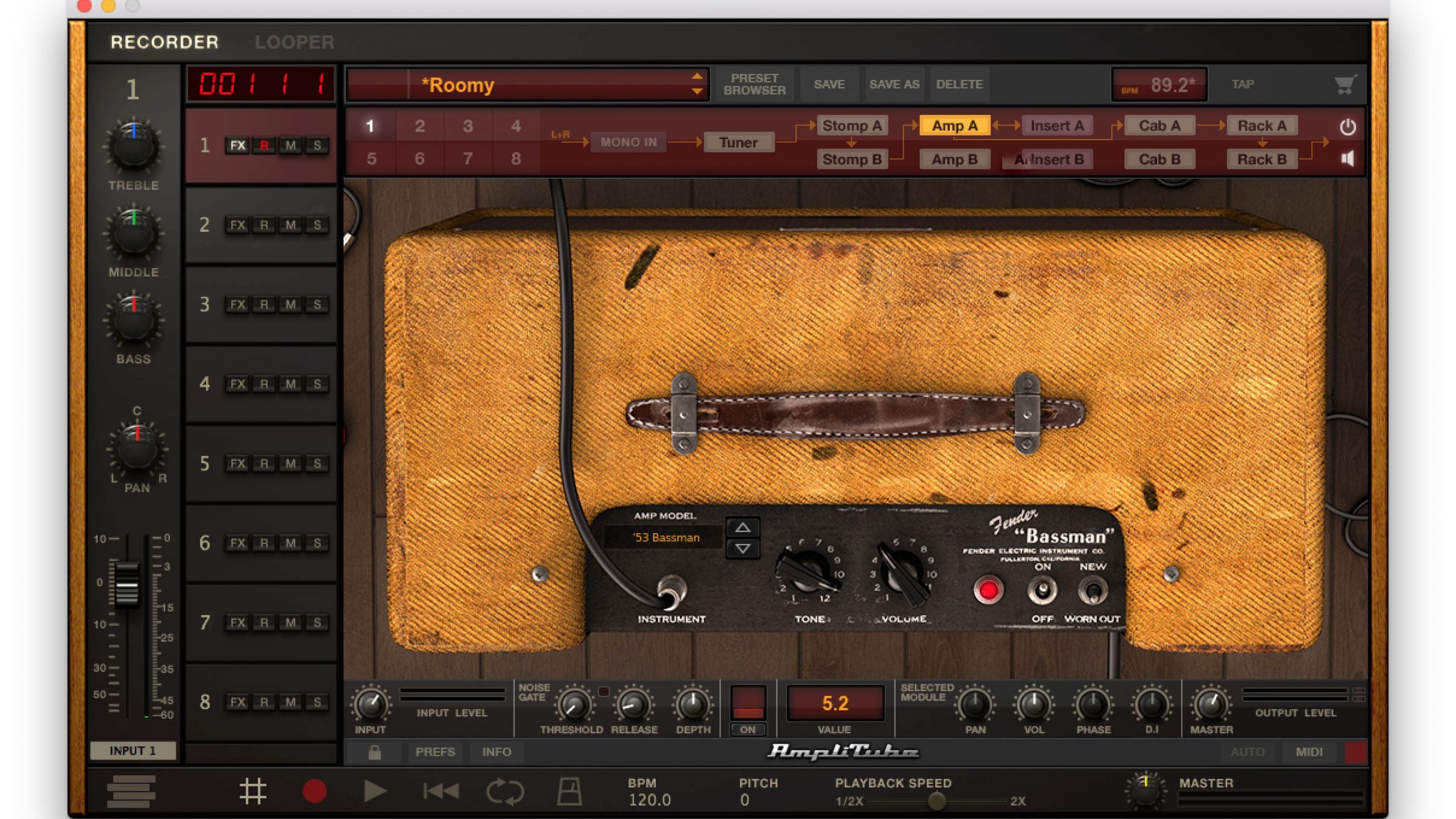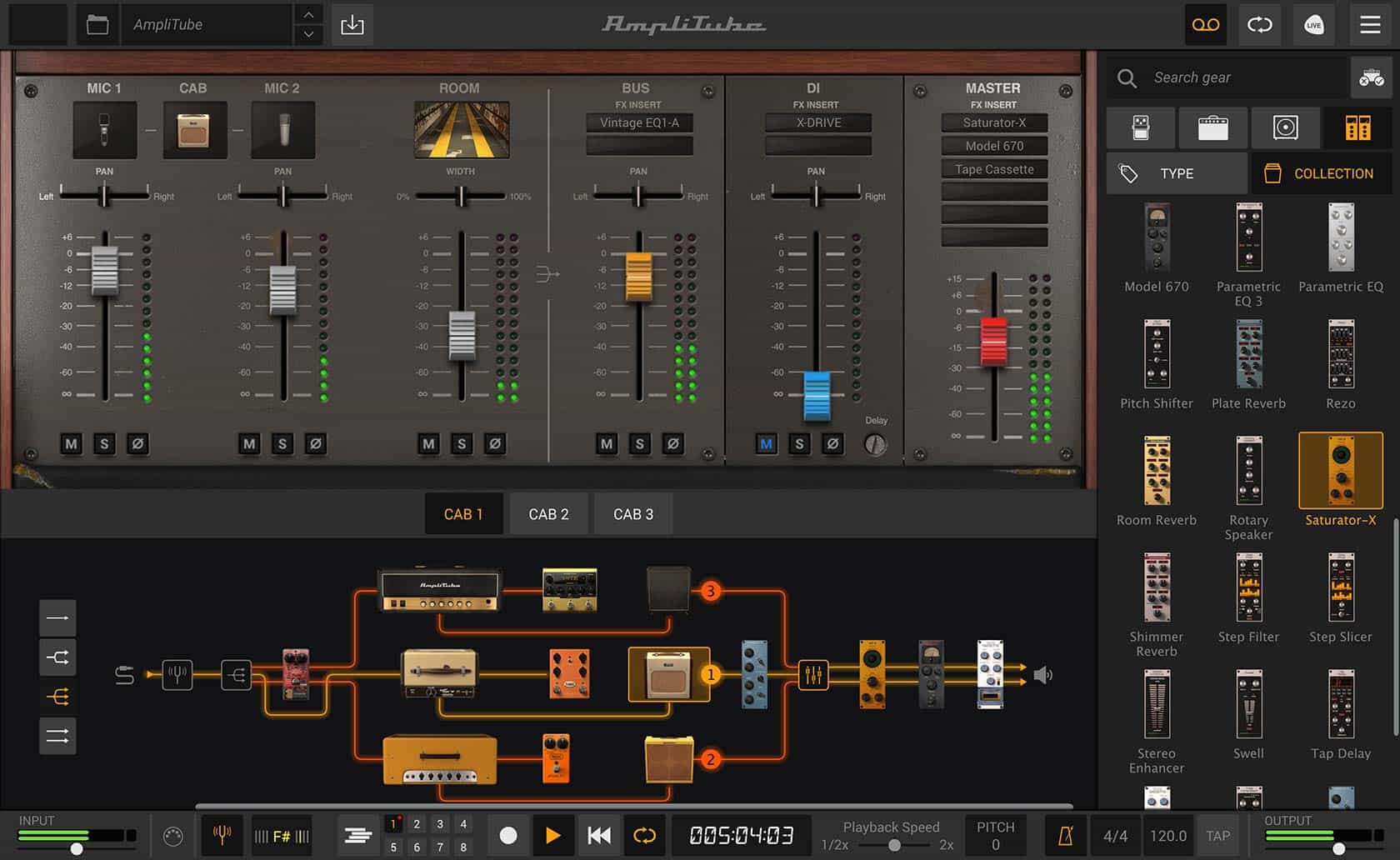
Amplitude 5 is a better looking, more efficient platform, but the changes are not just cosmetic. At first glance, I thought there were far more routing options than before, and though there are some extra possibilities, most of this impression is due to the improved visual representation. You can drag rack effects to the amplifier to create an FX loop, the pre-cabinet splitter icon can be clicked to create a second cabinet route, and at the end of it all, the fader icon opens up the mixer window for balancing close mics, room mics and DI signal to the master fader. As a new piece of gear is dragged into the chain window, the available cable destinations light up to guide the user. The previous versions’ set of eight routing combinations is replaced by four main chain types: single, two-way split, three-way split and (dual) parallel. It may have taken IK Multimedia some time to get here, but they have created a skilful balance of comprehensive visual feedback and simple, intuitive editability. The drag-and-drop signal chain portion of the interface is where the real ‘at last’ comes in. To help keep the GUI tidy, you can filter the gear sidebar to only show items in your collection, saving unnecessary dialogue boxes and trips to the Custom Shop.
Ik media amplitube windows#
To further this new sense of spaciousness, both the standalone and plug-in windows are user scalable, rendering many amp and pedal controls squint-free. Skeuomorphic representations replace drop-down menus for gear selection.

The interface appears less crowded, despite there being more control immediately available than before.

Visually Amplitude 5 gets off to a great start. The lower bar pulls together the input/output levels, tuner and sequencer related controls, doing away with the old input noise gate, which is no great loss. The ‘gear’ is now arranged by type and sub-category (clean, crunch, lead, etc.) in a sidebar to the right. The most apparent change served up by Amplitube 5 is the switch to a split-screen, drag-and-drop interface with the modules/gear above and the routing chain below. "There are all these sounds that you’re just not hearing on other pedals.The fifth iteration of Amplitube is the most significant since its first revision around 15 years ago. IK Multimedia AmpliTube X-Gear pedals: The web says MusicRadar verdict: The X-Gears offer extensive feature sets packed around top-notch effects that cover all bases without skimping on tone or tweakability. Guitarists may be the primary market, but for synths, keyboards and reamping these are pedals that can keep giving. The high-quality effects are made more useful by the host of features packed in around them, from the multi-function footswitches to the USB interfacing. IK Multimedia AmpliTube X-Gear: VerdictĮach X-Gear pedal offers a mix of flexibility, sound quality and creative range that, for the price, is hard to equal.

The presets are a great place to start, but the detailed parameter set of each algorithm allows for more tailoring than Savile Row. At the lengthy end there’s so much to space out with, from the epic (Church and Hall) to the modulated/magical (Magnetic, Ethereal, Bloom) to the pitchshifting twinkles of the two Shimmer effects. The Room, Chamber, Plate and Spring algorithms, when kept short, can really lift a source without smearing or swamping, though when lengthened they can all produce stunning results.Īdding expression pedal action to the mix can either help your instrument ride the ’verb or warp it into something more colourful.

X-Space, much like the Eventide Factor pedals, is likely to find work outside of guitar world.


 0 kommentar(er)
0 kommentar(er)
